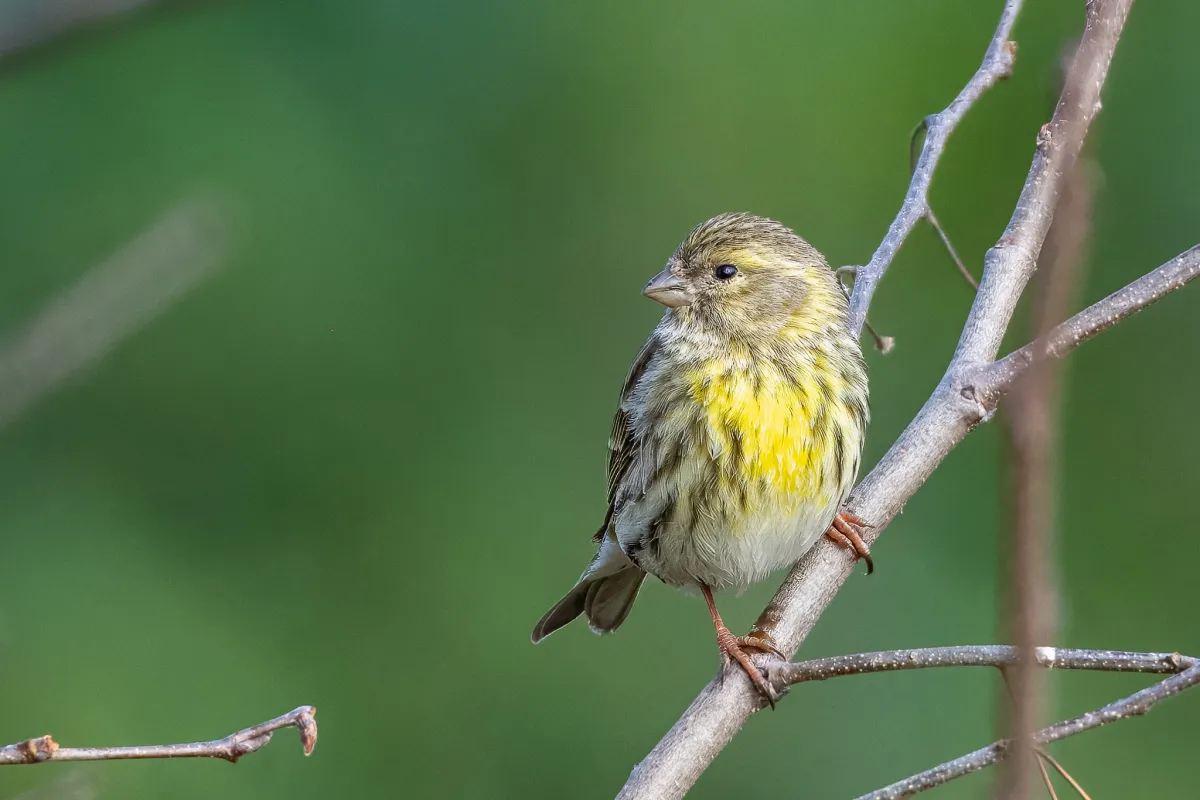The European Serin, Serinus serinus, is a small passerine bird and is found throughout Europe, North Africa, and southwestern Asia. A distinctive melodious song and vibrant appearance make it a pleasure to see, and hear, at any time.

Often, flocks of up to 30 or 40 of these birds can suddenly fly up from the vegetation as you walk past, always a surprise as, being so colourful, I’m amazed I never see them in advance, even when specifically looking for them!
Appearance
The Serin is short-tailed and measures approximately 11–12 centimetres in length. The males boast a brighter and more intense yellow colour, especially during the breeding season, while the females exhibit a more subdued, olive-green appearance. Additionally, both genders feature distinctive brown streaks on their backs.
Female Serin…

Habitat and Behaviour
These delightful birds are commonly found in open country areas, such as farmlands, orchards, and parks, where they can easily forage for seeds and small insects. Their preference for open spaces with scattered trees or shrubs makes them a familiar sight in various European landscapes. Their cheerful and vibrant chirping is a common sound during the breeding season, as the males sing to attract potential mates and establish their territories.

Breeding and Lifecycle
The European Serin typically builds cup-shaped nests in trees, shrubs, or even in the vegetation of agricultural areas. During the breeding season, which usually spans from April to July, the female lays a clutch of 3 to 6 eggs, which she diligently incubates for about 12 to 13 days. The nurturing parents then continue to care for the young ones until they are ready to fledge, which typically occurs around 14 days after hatching.
All puffed up and doing his ‘Hulk’ impression…

Conservation Status
While the European Serin is not currently considered threatened, certain factors such as habitat loss and changes in agricultural practices can impact their populations. Conservation efforts, including the preservation of suitable habitats and the promotion of sustainable agricultural practices, are essential to ensure the continued well-being of these charming birds.
